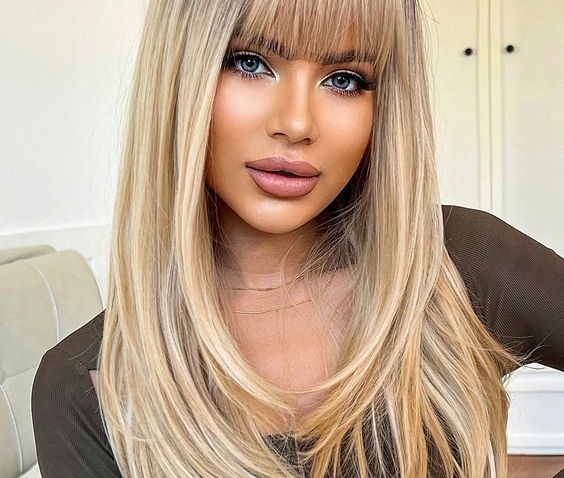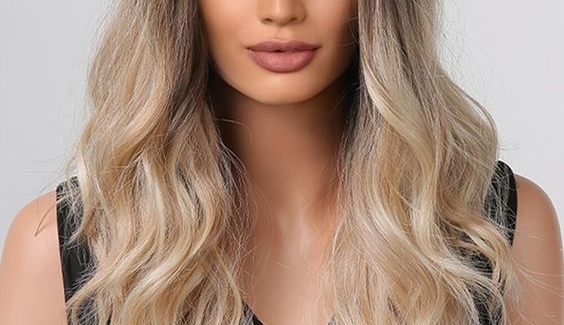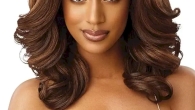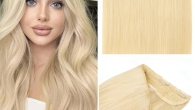
Why Did They Wear Wig? A Look at the History and Allure of Wigs
Wigs have been a fascinating part of human adornment for centuries, gracing the heads of royalty, entertainers, and everyday people throughout history. But why did people wear wigs? The answer, like the wig itself, is multifaceted, encompassing fashion, social status, hygiene, and even health concerns.
Unveiling the Reasons Behind the Wig Craze
Here, we delve into the intriguing reasons behind the historical wig trend:

-
Fashion and Status Symbol: Wigs became a prominent fashion statement in the 17th and 18th centuries, particularly in Europe. During this era, long, voluminous hair was considered desirable, and wigs offered a way to achieve this look regardless of one’s natural hair. Wealthier individuals donned elaborate wigs made from real human hair, while those with less means opted for more affordable options like horsehair or wool. Wigs, particularly the extravagant ones, became a symbol of affluence and high social standing.
-
Concealing Hair Loss: Wigs were not just for show; they also served a practical purpose. Hair loss due to age, illness, or medical treatments was a common concern, and wigs provided a way to conceal baldness or thinning hair. King Louis XIV of France, known for his elaborate wigs, is believed to have begun wearing them to hide his receding hairline.
-
Hygiene and Lice Prevention: Believe it or not, wigs played a role in maintaining personal hygiene during a time when frequent bathing wasn’t the norm. People would shave their heads and wear wigs, which could then be deloused more easily than natural hair. This was particularly important as head lice were a widespread problem.
-
Disease and Medical Conditions: Syphilis, a rampant disease in Europe during the 16th and 17th centuries, often caused hair loss and skin lesions on the scalp. Wigs offered a way to mask these symptoms and maintain a more socially acceptable appearance.
-
Religious and Cultural Significance: Wigs have held religious and cultural significance throughout history. In ancient Egypt, for instance, wigs were worn by both men and women and were often associated with social status and religious beliefs. Similarly, some Jewish communities have traditionally used wigs for married women as a symbol of modesty.
The Evolution of Wigs: From Extravagance to Understatement
The history of wigs is a story of constant evolution. The elaborate, powdered wigs of the 18th century eventually gave way to simpler styles as the 19th century progressed. Natural hair became more fashionable, and wigs became less of a necessity and more of an occasional accessory.

Today, wigs are still worn for a variety of reasons. They are used in the entertainment industry for costumes and theatrical productions. Wigs can also be a helpful tool for people experiencing hair loss due to medical conditions or treatments. Additionally, wigs offer a way to experiment with different hairstyles without commitment.
Beyond History: The Allure of Wigs Today
While wigs may not be an everyday fashion staple anymore, they still hold a certain allure. Wigs offer a chance to transform your look instantly, allowing you to experiment with different colors, lengths, and styles. They can boost confidence and self-expression, and high-quality wigs can look incredibly natural.
Modern wig construction has come a long way, with a variety of materials and techniques available to create realistic and comfortable wigs. Whether you’re looking for a fun and funky look or a more natural hair replacement solution, there’s a wig out there for you.
Wearing a Wig with Confidence: Tips and Considerations
If you’re considering trying a wig, here are some tips:
- Choose the right wig for your needs and style. Consider factors like hair length, color, texture, and cap construction.
- Invest in a high-quality wig. A well-made wig will look more natural and last longer.
- Learn how to care for your wig. Proper cleaning and maintenance will extend the life of your wig.
- Practice wearing your wig at home before stepping out. This will help you get comfortable with the look and feel.
- Don’t be afraid to have fun! Wigs can be a great way to express yourself and experiment with different styles.
Embrace Your Look: Where to Find the Perfect Wig
With so many options available, finding the perfect wig can be overwhelming. Here are some resources to help you get started:

- Online wig retailers: Many online retailers specialize in wigs, offering a wide selection of styles and brands.
- Wig salons: Wig salons provide a more personalized experience, with stylists who can help you choose the right wig and teach you how to wear it.
Beyond the Basics: Exploring Different Wig Types and Benefits
Wigs come in a vast array of styles, materials, and constructions, each offering unique benefits. Understanding the different types of wigs will help you choose the one that best suits your needs.
Synthetic vs. Human Hair Wigs:
-
Synthetic Wigs: These are typically more affordable than human hair wigs and require less maintenance. They come in a wide variety of colors, styles, and textures, making them a great option for experimenting with different looks. However, synthetic wigs may not be as heat-resistant as human hair wigs and can tangle more easily.
-
Human Hair Wigs: These offer the most natural look and feel, as they are made from real human hair. Human hair wigs can be styled with heat tools like curling irons and flat irons, allowing for greater versatility. However, they require more care and maintenance than synthetic wigs and come with a higher price tag.
Wig Construction Techniques:
-
Lace Front Wigs: These wigs feature a sheer lace frontal along the hairline, creating a realistic scalp appearance. Lace front wigs are ideal for achieving a natural-looking hairline and allow for more styling freedom, such as pulling your hair back in a ponytail.
-
Full Lace Wigs: These wigs are constructed entirely of lace, offering the most natural look and the greatest styling flexibility. Full lace wigs can be parted anywhere and styled in any way imaginable. However, they are also the most delicate and expensive type of wig.
-
Weft Wigs: These are more traditional wigs with hair sewn onto a wig cap. Weft wigs are generally more affordable than lace wigs and offer a good balance of quality and price. However, they may not provide the same level of realism as lace wigs.
Unveiling the Advantages of Wearing Wigs:
There are many reasons why people choose to wear wigs. Here are some of the key benefits:

-
Hair Loss Solutions: Wigs offer a comfortable and stylish solution for people experiencing hair loss due to medical conditions, aging, or alopecia. They can help restore confidence and self-esteem.
-
Versatility and Experimentation: Wigs allow you to change your look instantly, giving you the freedom to experiment with different hairstyles, lengths, and colors without damaging your natural hair.
-
Protection for Natural Hair: Wigs can act as a protective barrier for your natural hair, especially if you frequently use heat styling tools or harsh chemicals. Wearing a wig can help to minimize damage and promote healthier hair growth.
-
Convenience and Time-Saving: Wigs can be a great time-saver for busy people. With a pre-styled wig, you can achieve a polished look in minutes without the need for extensive styling.
-
Personal Expression: Wigs are a fun way to express your individuality and creativity. They can be used to create dramatic looks for special occasions or simply to add a touch of personality to your everyday style.
Finding the Perfect Fit: Wig Shopping Tips
Finding a wig that fits well is essential for achieving a natural and comfortable look. Here are some tips for wig shopping:

- Measure your head circumference. This will help you determine the correct wig size. Most wig retailers offer sizing charts to help you find the perfect fit.
- Consider your head shape. Wigs come in different shapes to accommodate various head shapes, such as oval, round, or square. Choose a wig that complements your natural head shape.
- Try on different styles. Don’t be afraid to experiment with different styles and lengths to find what flatters you most. Many wig retailers offer wig consultations to help you find the perfect match.
Unveiling the Timeless Appeal of Wigs
Wigs have a long and fascinating history, evolving from symbols of status and fashion to practical tools for self-expression and hair loss solutions. Today, wigs offer a variety of benefits, from convenience and versatility to confidence-boosting transformations. Whether you’re looking for a fun and funky look or a natural hair replacement solution, there’s a wig out there waiting to be discovered. So, embrace the world of wigs and unleash your inner stylist!












Leave a Reply